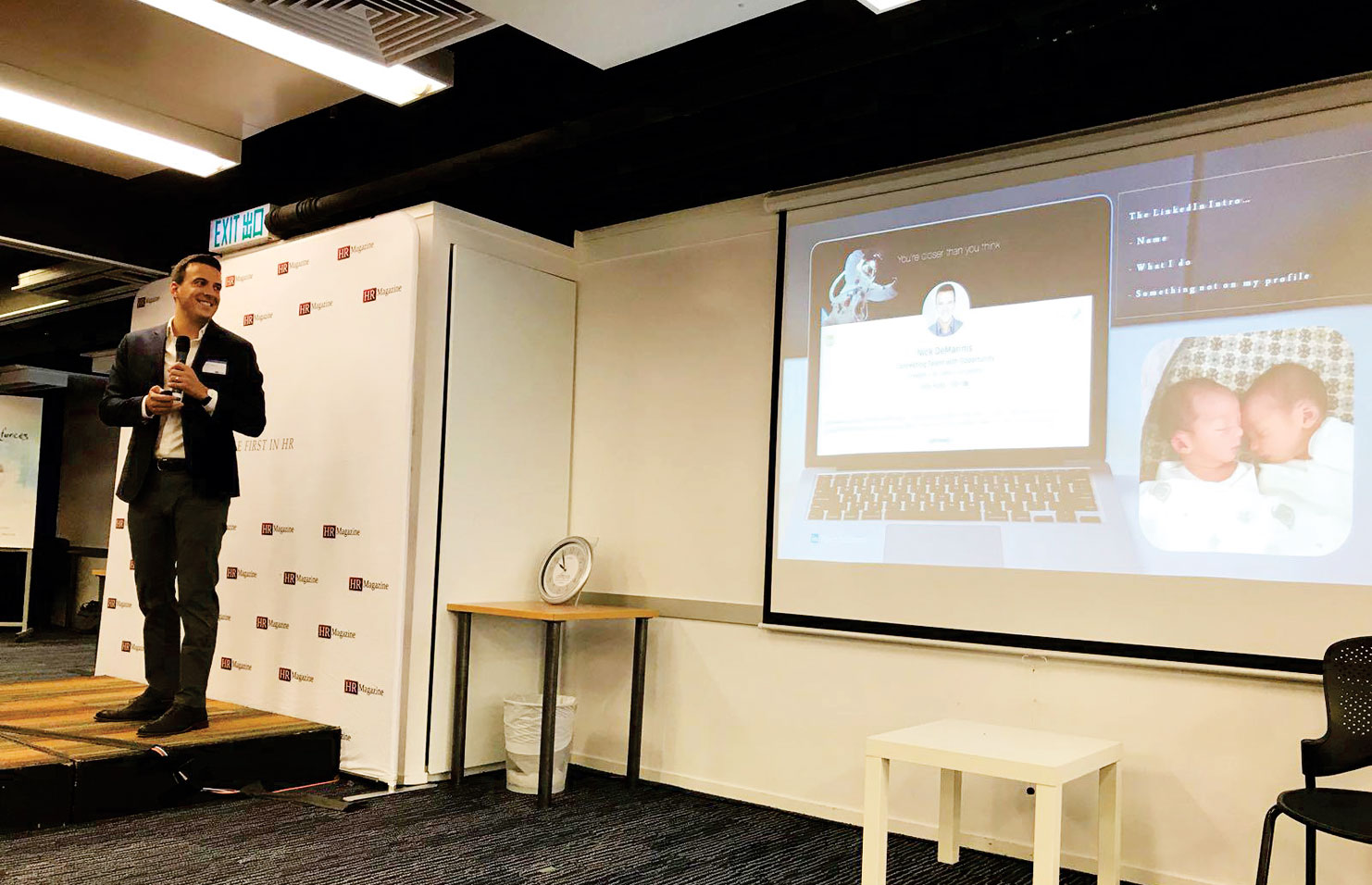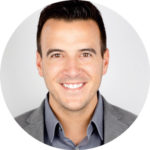An alumnus provides expert guidance on crafting your professional persona and keeping it up-to-date.
We hear plenty of buzz in the career world about how people need to develop their own brands, similar to the way companies have created lasting, positive associations with their products or workplaces. One example might be the way people think of Apple products as being stylish and intuitive, and the company as being a cool employer. Another example is how Southwest Airlines has managed to cultivate and maintain its reputation of being a low-frills, lower-cost carrier that is enjoyable to fly because of fun, friendly flight crews who crack jokes to make the time pass quickly. Such brands help buyers and sellers alike in a marketplace to quickly recognize with which parties they want to do business.
Since the world of work has become so fluid, with people changing jobs and relocating often, and with companies getting in and out of business lines and partnerships, it makes sense that people develop their own personal brand. They can cultivate their own brand from one position to the next, or for that matter, from one company or one industry to the next. A strong personal brand, the thinking goes, can communicate to everyone around why someone is a desirable employee or a good fit—a valuable attribute in a fast-changing world.
Building an effective personal brand remains an elusive concept for many people, though. That is why Nick DeMarinis ’05 devotes time and energy speaking to small groups and individuals about how people actually go about crafting a brand, communicating it to people, and staying true to it.
DeMarinis is well-suited to this work. He began his business career in sales and gradually moved up into broader managerial positions where he had responsibilities not just for meeting sales targets, but also for divisional hiring, profits, and operations, meaning greater responsibility for the success of different kinds of employees across multiple functions.
Along the way, he worked across a variety of cultures and markets in Europe and the Asia Pacific region. All this gave him valuable experience and the ability to look at the world from different viewpoints. Additionally, DeMarinis spent several years working from a variety of locations for LinkedIn, the professional social media network company whose platform was invented to help people communicate their brands in the virtual world.
DeMarinis advises people to start by thinking of their personal brand as their reputation among other people. A good reputation is something to earn and to keep, and a personal brand is like that, he said. A brand or reputation is maintained through actions, and through visibility among physical networks, such as work and professional groups, and in the virtual world through social media, he said.
If that still sounds vague, think of what personal “pillars” or qualities make up your personal code of conduct, DeMarinis suggested. “My brand involves three key pillars: love, positivity, and compassion. These pillars are who I am, what I want my brand to be, and guiding principles for how I bring my brand to life.”

So in the physical work world as well as in virtual spaces, DeMarinis wants people to see a “compassionate leader” when they encounter him. His philosophy as a supervisor: “People don’t work for me; I work for them.” This means getting to know all the employees well so that he can coach, correct, and guide aptly where needed.
He also leads through the example of good work performance, he said. Employees still have accountability for the quality of their work as individuals, DeMarinis stressed, and he acknowledged that sometimes a leader has to make a personnel change. He likes to turn to the world of baseball for examples almost everyone has seen. “Sometimes a pitcher can be in the game too long and is no longer effective. The compassionate action by the manager is to remove that person. Sometimes being compassionate means making decisions that may seem tough in the moment, but is a good decision long-term.”
Coaching people who are inside the organization and projecting positivity and competence to clients and prospective clients outside the workforce requires a certain amount of focused attention. DeMarinis sets aside time at two points in the week to create thoughtful messages to these audiences. Even though there is overlap in the content (as there should be if someone stays true to his or her brand), DeMarinis likes to think of the groups distinctly when he is considering what to say to whom.
On Sunday evening, he said, he sets aside an hour or two of quiet time to read articles and essays that speak to the pillars he embraces, and to digest reports that are relevant to his industry, perhaps in a technical or quantitative way. Then DeMarinis makes comments on the pieces worth sharing—and it is not worth sharing if you do not have a substantive remark to offer—and schedules the content for digital postings that will appear during the week. He still uses the LinkedIn platform’s scheduling tool for this. This is one way of curating his brand.
He also tends regularly to this practice on Fridays. That is the day of the week when he sets aside time to write two to three emails that are typically personalized thank-you messages. He enjoys this, and keeps his notes succinct to express gratitude for a specific deed or observation.
“If it’s not specific, it’s not genuine,” he noted, and no one likes that. But an employee will appreciate having a supervisor write that “I realize the other team member was struggling in that presentation earlier this week, and I saw that you jumped in and helped that person out.”
DeMarinis offered guidance in this step-by-step format for Spirit readers.

1. Identify your brand
Before you can even think about elevating your brand, you have to know what your brand is or what you want it to be. Who are you? Identify a few key pillars that best represent who you are. What do people say about you when you are not in the room? More importantly, what do you want them to say about you? Then think about how you convey this both online and offline. Is this an accurate reflection? If so, great. If not, make some changes. Remember that people will do Internet searches on each other before they are about to meet, so it is quite likely they are going to see some information about you.

2. Take control of your brand
In regard to online, take control of your social profiles on all platforms. Build out your profiles with the intended use and audience in mind. For example, my profile for Instagram is more personal (with family photos and sports) than LinkedIn, which is more geared toward my professional identity. In today’s world, it is expected for us to have a digital brand. Accept it, own it, and put your best foot forward.

3. Bring your brand to life
Branding is not static. It is living and breathing. Building a brand is more than just having a profile. It is reflective of how you interact with your network and community. It is important to be active on social platforms because that is part of living in our world today. Connect with people, engage with your network, and share content. This is the absolute most important part of personal branding. Every interaction is a building block to your brand.
 Nick DeMarinis is a director of enterprise growth for WeWork, based in New York City. WeWork is an innovator in leasing commercial real estate space for the co-working needs of businesses, the creation of residential living communities, and other pursuits that contribute to forming communities. Prior to joining WeWork, he spent 12 years in the technology industry. He started his career with Yahoo and then spent the last eight years through 2018 with LinkedIn in various leadership roles across both North America and Asia Pacific. He was based in Hong Kong for a time and was responsible for operations there. He earned his bachelor’s from Saint Leo at University Campus in business administration with a specialization in management, and attained a master’s degree in international business from St. John’s University in Rome, Italy.
Nick DeMarinis is a director of enterprise growth for WeWork, based in New York City. WeWork is an innovator in leasing commercial real estate space for the co-working needs of businesses, the creation of residential living communities, and other pursuits that contribute to forming communities. Prior to joining WeWork, he spent 12 years in the technology industry. He started his career with Yahoo and then spent the last eight years through 2018 with LinkedIn in various leadership roles across both North America and Asia Pacific. He was based in Hong Kong for a time and was responsible for operations there. He earned his bachelor’s from Saint Leo at University Campus in business administration with a specialization in management, and attained a master’s degree in international business from St. John’s University in Rome, Italy.

